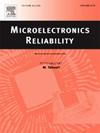一种14位3毫秒/秒SAR ADC,具有自校准功能,用于单事件瞬态缓解
IF 1.9
4区 工程技术
Q3 ENGINEERING, ELECTRICAL & ELECTRONIC
引用次数: 0
摘要
本文提出了一种集成数字前端自校准和单事件瞬态(SET)硬化的14位3 ms /s SAR ADC架构,实现在55 nm 1P4M工艺中。分段电容式数模转换器(CDAC)采用低位电容校准机制代替传统的外部DAC,在减少面积和功耗的同时实现电容失配校准。对于辐射硬化,过压抑制电路将采样开关的敏感节点电压限制在3.3 v工艺规范内。CDAC中嵌入了大量内置电流传感器(BBICS),通过动态切换顶板和共模节点来消除辐照效应,而无需引入额外的转换周期或复杂的补偿电路。此外,采用双联锁存储单元(DICE)结构的动态比较器来减少辐射敏感节点。仿真结果表明,校正后的差分非线性(DNL)和积分非线性(INL)均小于1 Least Significant Bit (LSB),有效抑制了采样开关过调电压。在线性能量传递(LET) = 37 MeV∙cm2/mg的辐射条件下,硬化后的CDAC输出误差仅为2 mV,有效位元数(ENOB)为13.42,接近辐照前水平。本研究为高可靠性ADC设计提供了系统的SET强化解决方案。本文章由计算机程序翻译,如有差异,请以英文原文为准。
A 14-bit 3-MS/s SAR ADC with self-calibration for single-event transient mitigation
This paper proposes a 14-bit 3-MS/s SAR ADC architecture integrating digital front-end self-calibration and single-event transient (SET) hardening, implemented in a 55 nm 1P4M process. The segmented capacitive digital-to-analog converter (CDAC) employs a low-bit capacitor calibration mechanism in place of a traditional external DAC, achieving capacitor mismatch calibration while reducing area and power consumption. For radiation hardening, an overvoltage suppression circuit limits the sensitive node voltage of the sampling switch within the 3.3-V process specification. A bulk built-in current sensor (BBICS) is embedded in the CDAC to eliminate irradiation effects by dynamically switching the top plate and common-mode nodes, without introducing additional conversion cycles or complex compensation circuits. Additionally, a dynamic comparator with a dual interlocked storage cell (DICE) structure is used to reduce radiation-sensitive nodes. Simulation results show that after calibration, differential non-linearity (DNL) and integral non-linearity (INL) are both less than 1 Least Significant Bit (LSB), and the sampling switch overshoot voltage is effectively suppressed. Under radiation conditions with linear energy transfer (LET) = 37 , the hardened CDAC exhibits an output error of only 2 mV and an effective number of bits (ENOB) of 13.42, approaching the pre-irradiation level. This study provides a systematic SET hardening solution for high-reliability ADC design.
求助全文
通过发布文献求助,成功后即可免费获取论文全文。
去求助
来源期刊

Microelectronics Reliability
工程技术-工程:电子与电气
CiteScore
3.30
自引率
12.50%
发文量
342
审稿时长
68 days
期刊介绍:
Microelectronics Reliability, is dedicated to disseminating the latest research results and related information on the reliability of microelectronic devices, circuits and systems, from materials, process and manufacturing, to design, testing and operation. The coverage of the journal includes the following topics: measurement, understanding and analysis; evaluation and prediction; modelling and simulation; methodologies and mitigation. Papers which combine reliability with other important areas of microelectronics engineering, such as design, fabrication, integration, testing, and field operation will also be welcome, and practical papers reporting case studies in the field and specific application domains are particularly encouraged.
Most accepted papers will be published as Research Papers, describing significant advances and completed work. Papers reviewing important developing topics of general interest may be accepted for publication as Review Papers. Urgent communications of a more preliminary nature and short reports on completed practical work of current interest may be considered for publication as Research Notes. All contributions are subject to peer review by leading experts in the field.
 求助内容:
求助内容: 应助结果提醒方式:
应助结果提醒方式:


